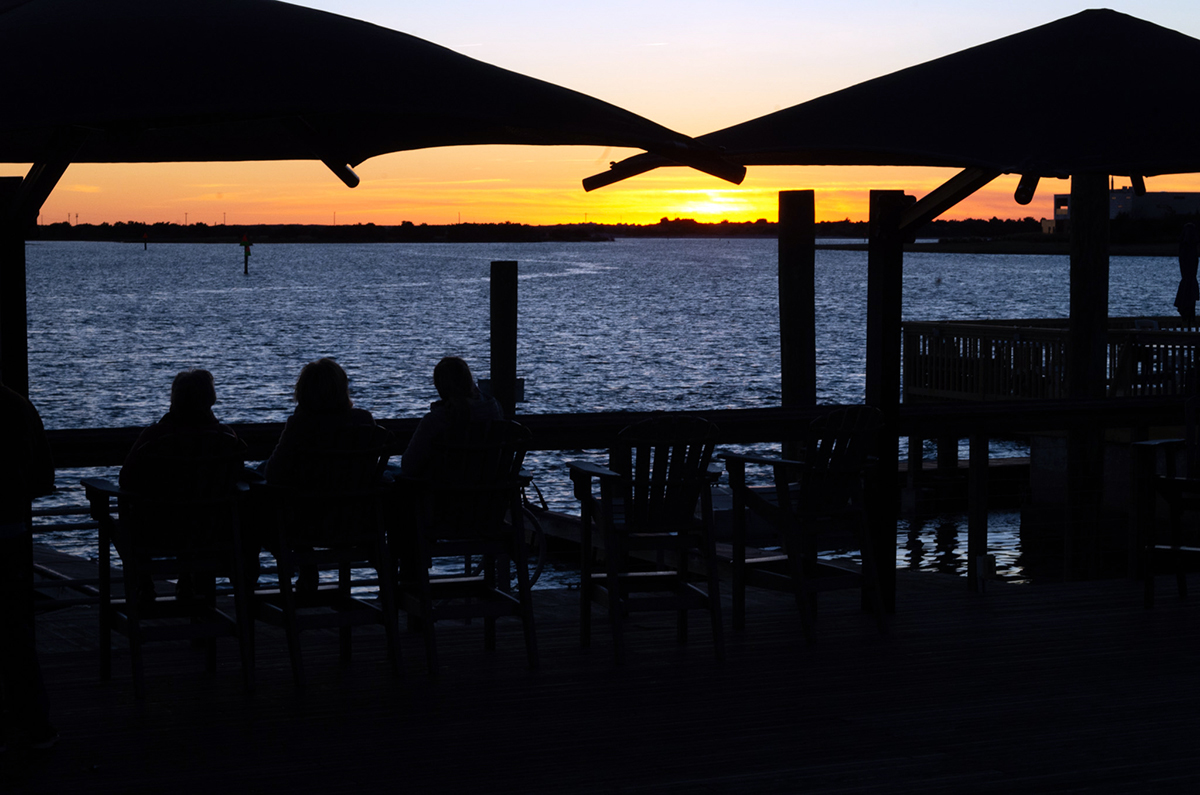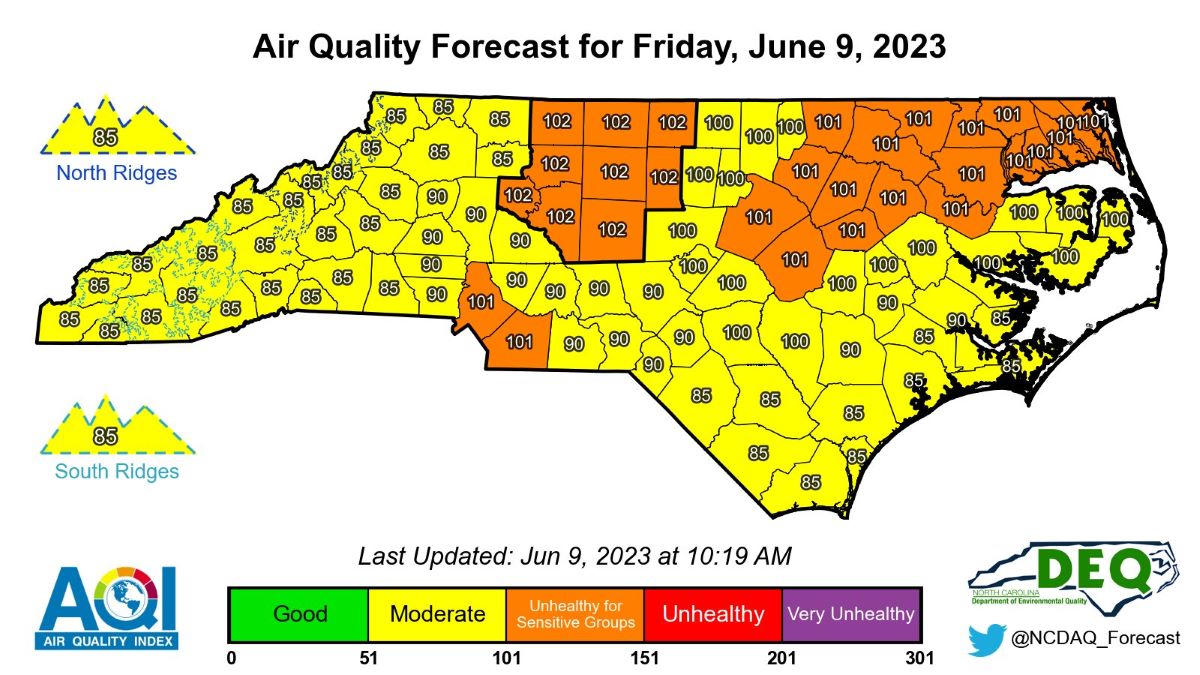
Update noon June 9:
As smoke from Canadian wildfires travel south, officials determined that Wake County, the northern coastal plain, and the Triad region are under a Code Orange Air Quality alert until 11:59 p.m. Friday because of fine particle pollution.
Supporter Spotlight
Localized but high fine particulate matter readings prompted the air quality forecast for these areas to be upgraded from Thursday night’s forecast of Code Yellow, to a Code Orange, officials said late Friday morning.
The coastal counties under Code Orange are Halifax, Edgecombe, Wilson, Martin, Northampton, Bertie, Hertford, Gates, Chowan, Perquimans, Pasquotank, Camden and Currituck.
Wake, Randolph, Davidson, Davie, Alamance, Guilford, Forsyth, Caswell, Rockingham, Stokes, Johnston, Franklin, Nash also are under Code Orange, but the rest of the state is in the Code Yellow range for fine particulates.
State law prohibits the open burning of yard waste and other vegetative matter on Air Quality Action Days, defined as Code Orange or above.
As weather pushes more smoke away, PM2.5 and ozone levels should hold in the Code Yellow range on Saturday, and could return to healthy Code Green levels by Sunday. The forecast is subject to change, and state meteorologists are to continue monitoring conditions.
Supporter Spotlight
Visit the Air Quality Portal online for the latest air quality forecast.
10:30 a.m. June 8 update, “Code Orange air quality alert remains for entire state” below:
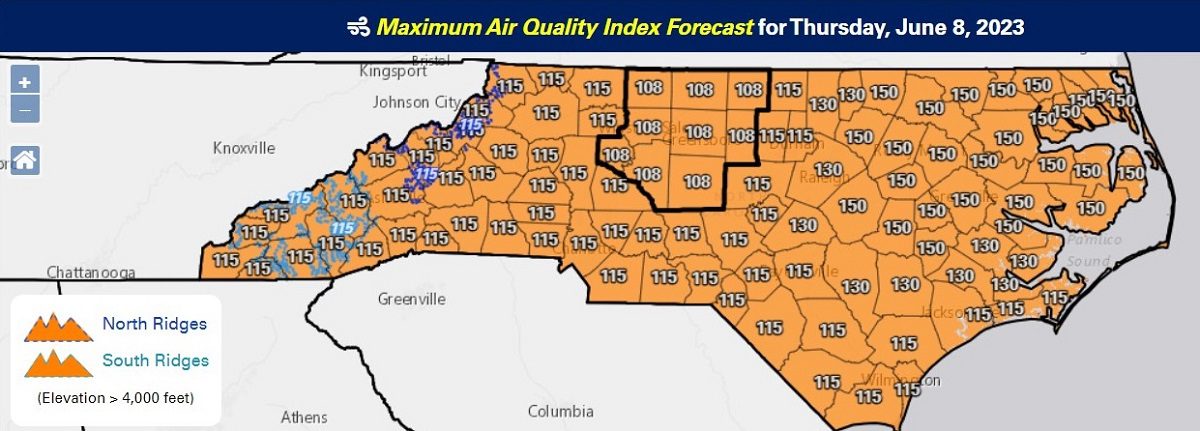
A Code Orange air quality alert remains in effect statewide until 11:59 p.m. Friday for particle pollution because of smoke and fine particle pollution from Canadian wildfires.
The North Carolina Department of Environmental Quality’s Division of Air Quality and the Forsyth County Office of Environmental Assistance and Protection issued the alert for the entire state around 6 p.m. Wednesday evening.
The alert remains valid at the time of the department’s 10 a.m. update, according to the website.
Looking ahead, officials forecast for Friday that Code Orange fine particulate conditions will continue. On Saturday, the low pressure system hovering over the northeast US is expected to move eastward, allowing for some relief in the afternoon and evening.
Both fine particulate and ozone concentrations should hold in the Code Yellow range on Saturday.
June 6 update, “DEQ forecast Code Red or Orange air quality statewide,” below:
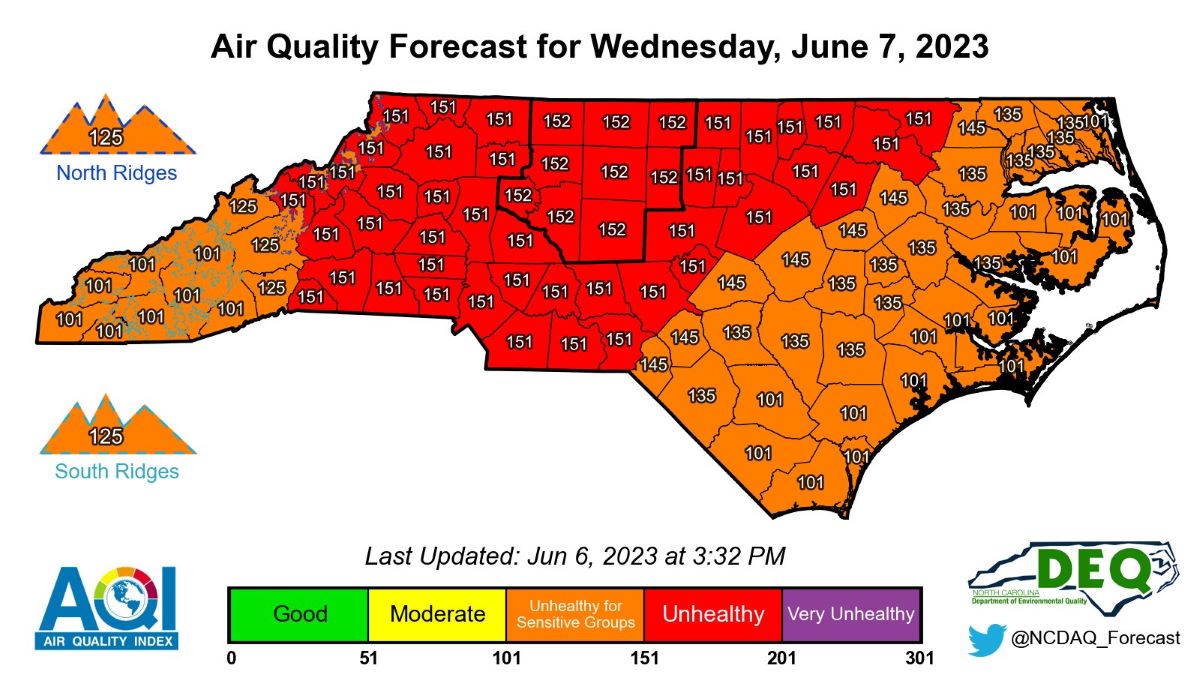
Because of rapidly rising levels of fine particle pollution attributed to smoke from active wildfires in Canada, all of North Carolina on Wednesday will be under a Code Red or Code Orange Air Quality Action Day, officials said around 5 p.m. Tuesday.
The new air quality forecast takes effect at midnight Wednesday.
North Carolina Department of Environmental Quality’s Division of Air Quality and the Forsyth County Environmental Assistance and Protection issue the air quality alerts.
The Code Red alert covers much of central North Carolina, including Charlotte, the Triangle and the Triad regions. Code Red on the Air Quality Index represents unhealthy air quality for everyone.
The rest of the state, including eastern and western regions, are forecast to reach on Wednesday Code Orange levels.
Sensitive populations including older adults, younger children and those with respiratory conditions such as asthma may experience health impacts when outdoors for prolonged times.
The air quality forecast for Tuesday remains in the Code Orange range for most of the state and Code Yellow for several southeastern counties.
Original post “DEQ issues Code Orange air quality alert for most of NC” published at 3 p.m. Tuesday:
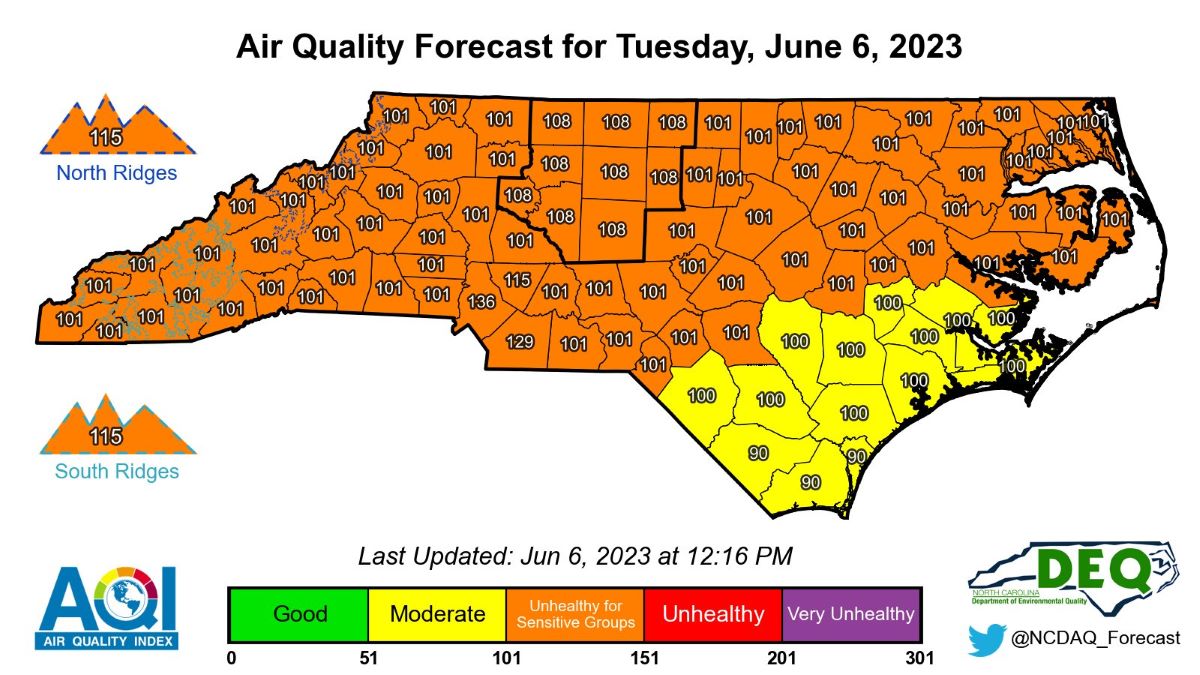
A Code Orange air quality alert is in effect for most of the state, including northeastern North Carolina, through midnight Wednesday because of smoke and fine particles from active wildfires in Canada.
The North Carolina Department of Environmental Quality’s Division of Air Quality and the Forsyth County Environmental Assistance and Protection issued the air quality action day that went into effect at noon Tuesday. Action days are issued when the Air Quality Index is in unhealthy ranges, according to the U.S. Air Quality Index.
Most North Carolina counties are under the Code Orange alert except for Robeson, Bladen, Sampson, Duplin, Lenoir, Beaufort, Columbus, Brunswick, New Hanover, Pender, Onslow, Carteret, Jones, Craven and Pamlico counties, which are in the upper Code Yellow range.
Officials said they will review the forecast for these counties later in the day Tuesday to determine if they should be updated to a Code Orange as well.
Code Orange on the Air Quality Index indicates the potential for elevated levels of particle pollution that could impact sensitive populations, including older adults, younger children and those with respiratory conditions such as asthma. These groups may experience health impacts when outdoors for prolonged times during these conditions and are recommended to limit prolonged or heavy exertion outdoors.
People sensitive to air pollution may consider limiting their outdoor activities during a Code Yellow alert.
Smoke and accompanying high levels of fine particulates are being carried downwind from Canada into North Carolina. As the smoke continues to build in the state, high levels of fine particles are expected to mix near ground level, officials said Tuesday.
Fine particulate matter, known as PM2.5, is made up of particles smaller than the width of a human hair. These particles can reach deep in the lungs and aggravate asthma and other lung conditions, and have also been linked to heart conditions.
DAQ monitors and forecasts ozone and PM2.5 daily using the Air Quality Index, along with the corresponding color codes to help North Carolinians plan their outdoor activities.
Next day and extended information is issued by 3 p.m. with a morning update by 10 a.m.
For the latest air quality information, visit the Air Quality Portal online. DEQ’s website has a list of resources for keeping safe around wildfire smoke.



